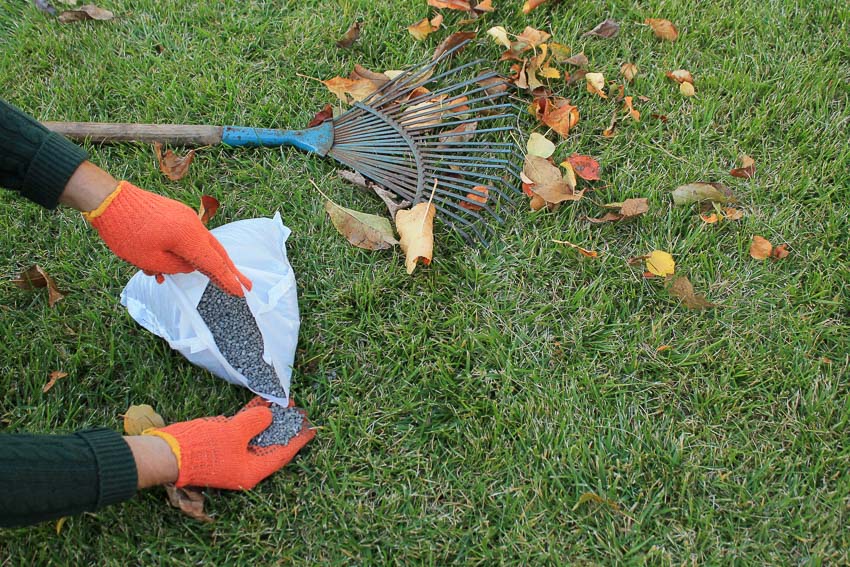Once temperatures drop in the fall, Southern lawns take a break. After solid growth during the hot summer months, the warm-season grasses in your lawn need a boost of nutrients. Learn how to fertilize your lawn in the fall with our fertilizer guide.
What is Lawn Fertilization?
Lawns require a lot of nutrients to stay lush and green, which is why we use fertilizers. Fertilizers are specially formulated and packed with nutrients, then applied to lawns to improve their appearance and health.
The primary nutrients that lawns need to grow are nitrogen, potassium, and phosphorus. Fertilizers are labeled with an NPK ratio, which refers to the percentage of each element contained in the product.
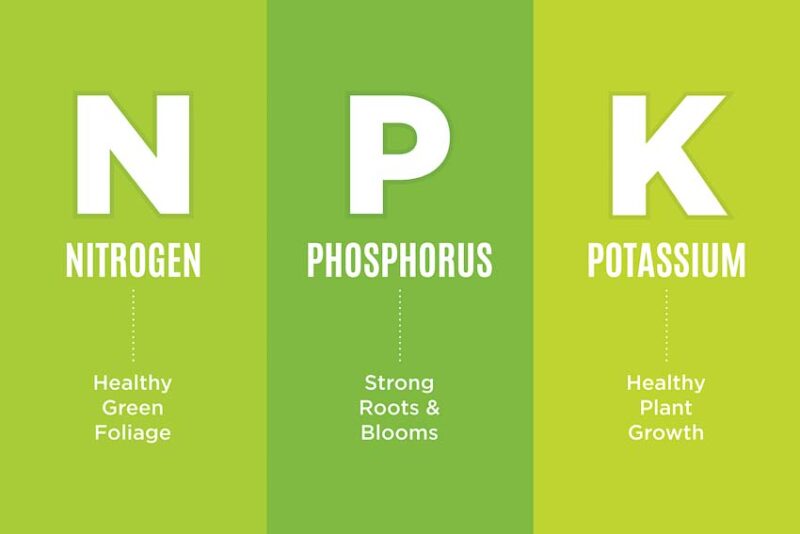
While there are other secondary nutrients and trace minerals that grass needs to grow, these primary nutrients are the ones you find in lawn fertilizer. Chemists formulate fertilizers with varying percentages of these elements, which you apply according to the needs of the grass.
Here’s a brief overview of how nitrogen, potassium, and phosphorous affect plant health:
| Nutrient | Description |
| Nitrogen (N) | Promotes leafy, green growth and overall plant vigor. |
| Phosphorous (P) | Supports root development, flowering, and fruiting. |
| Potassium (K) | Contributes to overall plant health, stress resistance, and disease resistance. |
Why Fertilizing in Autumn is Important for Southern Lawns
Fertilizing in autumn is particularly important for Southern lawns because of soil depletion. Furthermore, helps prepare your grass for winter.
Soil Recovery from Summer Stress
Warm-season grasses have high nutritional requirements, and after growing for several months, the soil in your yard will lose nutrients. Fall fertilization will help the soil recover. It also gives your grass an extra boost of nutrients to store in its root system.
Replenishing the soil after your lawn has been growing steadily from spring to early fall ensures healthy fall plant activity. It also provides essential nutrients so that your lawn emerges strong and vibrant in the spring.
Preparation for Mild Winters
Southern regions experience mild winters, but there are occasional cold snaps and temperature fluctuations. Fall lawn fertilizing helps strengthen your lawn, making it more resilient and better able to handle winter stress.
As soon as the temperatures dip in September, warm-season grasses begin to send nutrients to their roots in preparation for winter. They enter dormancy when soil temperatures reach 50°F (10°C).
Even though lawns in the South aren’t actively growing in the winter, they still need year-round care. You’re ensuring your lawn is as prepared as it can be for winter with fall fertilizer applications.
Year-Round Lawn Growth in the South
Even though wintertime in the South isn’t the best time for warm-season grasses to grow, your lawn is hardy enough to withstand cold snaps. And, when grass is dormant, it still requires water to protect the root system from freezing temperatures.
Many Southerners overseed their lawns with cool-season grasses in the winter. The best cool-season grass for overseeding winter lawns in the South is annual ryegrass. It’s inexpensive, germinates quickly, and keeps your lawn green throughout the winter.
After the first frost, you can put your mower away unless you plan to overseed your lawn. Water your grass every few weeks throughout winter to keep the soil moist.
Cool-season weeds don’t sleep during the winter. This makes late fall a good time to use a pre-emergent herbicide to prevent weeds like dandelions and crabgrass from sprouting. To avoid harsh chemicals, use a natural pre-emergent product like corn gluten to keep weeds from taking over your lawn.
Pest and Disease Resistance
Healthy lawns are more resistant to pests and diseases. If your lawn goes into winter weakened from a lack of nutrients, it will be more susceptible to diseases, insects, fungi, and pests.
Keeping your Southern lawn healthy to avoid pest and disease damage involves all types of maintenance, from mowing to soil aeration. In addition to fall fertilizers, your grass needs healthy soil and plenty of water to prepare for winter and protect itself.
The Benefits of Fertilizing in the Fall
For Southern lawns, fall grass fertilizing gives them the energy they need to survive winter and makes them strong and resilient for quick growth in the spring.
Promotes Root Growth
Warm-season lawns are heavy feeders, requiring fertilization from early spring to fall. From September to November, warm-season lawns shift their focus from above-ground growth to root development and nutrient storage.
Because warm-season grasses go dormant in the winter, you don’t want to give them a lot of nitrogen, which encourages excessive top growth. Instead, use a fertilizer high in phosphorous to promote root growth and high in potassium to enhance winter hardiness.
Enhanced Winter Hardiness
Timing is everything when it comes to fertilization. You don’t want to fertilize your Southern lawn too late in the fall because it can encourage growth when your grass should be dormant.
Ideally, you should fertilize Southern lawns 6 to 8 weeks before the first frost. Most experts recommend applying the last round of fertilizer in September because late fall fertilizer will encourage new growth that cold snaps can damage.
Reduced Weed and Disease Pressure
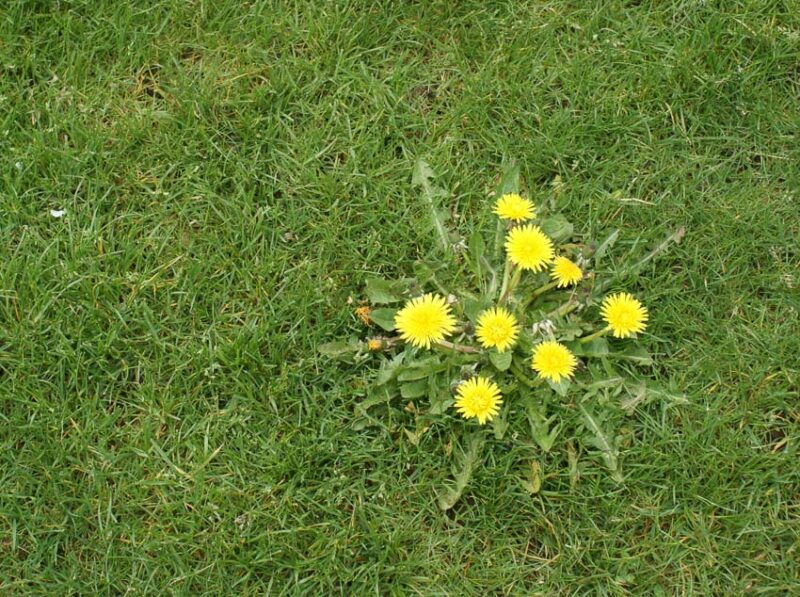
Weeds are opportunistic and try to take over when your lawn goes dormant. Since dormancy is unavoidable, the best you can do is make your lawn as healthy as possible by feeding it plenty of nutrients in the fall.
By promoting vigorous root growth in the fall, your grass can compete with weeds even though it’s not actively growing. Also, well-fed lawns are more resistant to pests and diseases. If your lawn goes into winter dormancy in a weakened state, it will be more prone to weeds, diseases, and insect infestations.
Improved Spring Green-Up
When you fertilize your yard in the fall, the grass absorbs the nutrients and puts the energy into its root system. All perennial plants do this because it gives them a head start in the spring.
Also, your soil will have residual nutrients left from the last fertilization of the year. Once your grass starts sprouting some green leaves in the spring, it will use the stored nutrients in its roots and the soil. Then, you can start your spring fertilizer routine on a healthy lawn.
When to Fertilize in the Fall in the South
Knowing when to apply fertilizer for grass in the fall is critical. Doing it too late in the season can encourage fresh, green growth that’s more susceptible to damage from freezing temperatures.
Ideal Timing
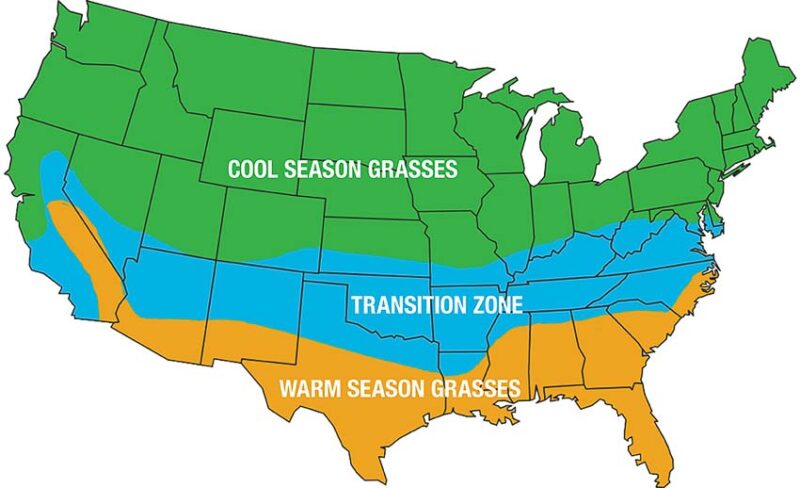
Implementing a fertilizer schedule for your lawn puts you on track to have healthy grass all year long, and fall is a great time to start.
The best time to fertilize in the fall in the South is in September, about two months before the first expected frost date. Remember that the specific timing of frost dates varies depending on your growing zone and regional climate.
If your home is in a microclimate, such as on a south-facing slope, the first frost can be later than other areas in your growing zone. Reach out to your local agricultural extension office to learn more, and don’t hesitate to consult with lawn care professionals in your area for more recommendations tailored to your specific region.
Temperature and Weather Conditions
The best time to apply autumn grass fertilizer on Southern lawns depends on temperature and weather conditions. The optimal time to fertilize is when the weather is reasonably warm in mid-September. Soil temperatures above 55°F (13°C) will aid in the delivery and absorption of nutrients.
Depending on whether your fertilizer is liquid or granules, you also want to avoid extreme heat and windy conditions. When applying organic fertilizer, weather is less of an issue because it’s harder to burn your lawn with natural fertilizers like aged manure.
Tips for Fertilizing in the Fall for Southern Gardeners
The best time to fertilize your lawn in the fall is about 6 to 8 weeks before the last frost. October is too late to apply fertilizer. Here are some more tips to increase the effectiveness of your early fertilizer application.
Soil Testing
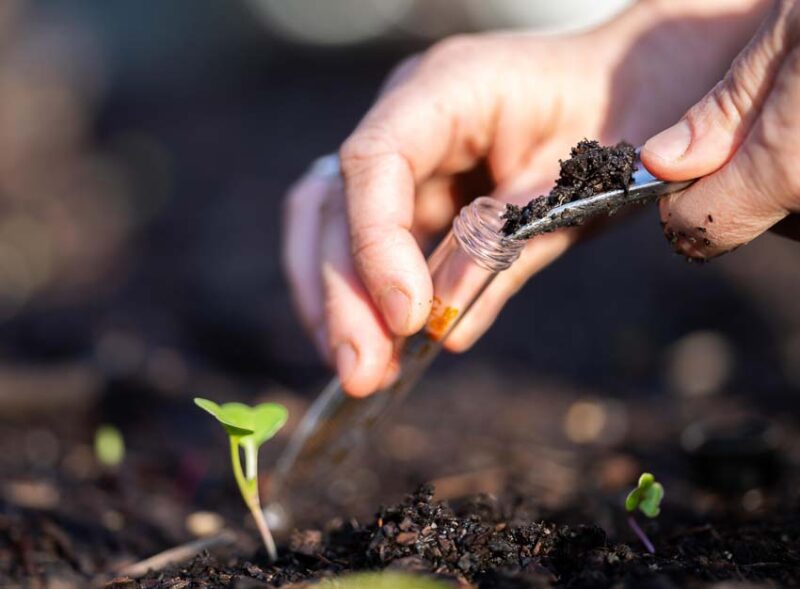
Conduct a soil test at least once a year to determine what soil amendments your lawn needs. The best soil tests are lab kits, and they will tell you a lot about your soil, including the pH level and what specific nutrients your lawn needs.
Every yard enthusiast needs a soil thermometer, moisture meter, and pH tester. Soil temperature is an essential metric for gauging when to initiate various lawn care activities, such as overseeding, fertilizing, and applying pre-emergent herbicides.
Choosing the Right Fertilizer
The best lawn fertilizer for autumn for your Southern lawn will be higher in phosphorus and potassium than nitrogen to encourage root development and disease resistance.
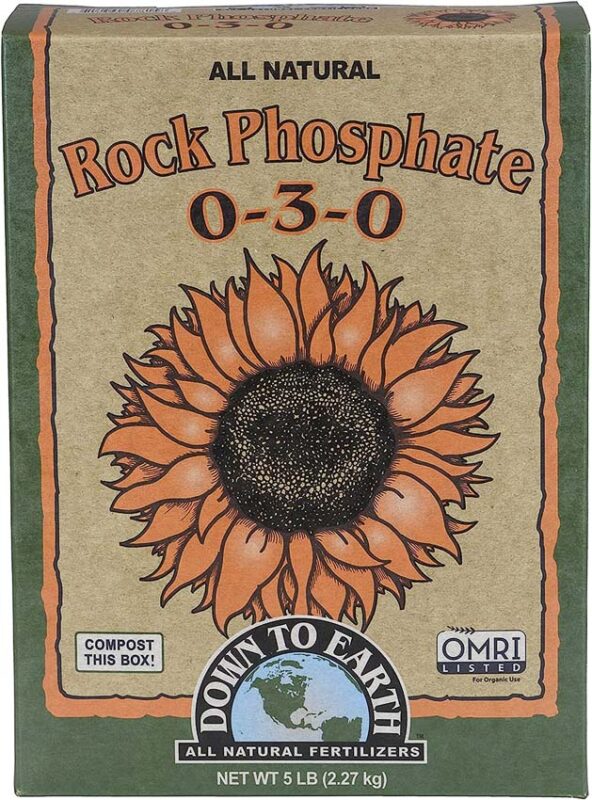
The phosphorus (P) supports healthy root systems, and the potassium (K) makes your lawn more resistant to winter stress.
Here are some of the best fall fertilizers for lawns.
| Fall fertilizer for lawns | NPK | Type |
| Sunshine Harvest High K | 5-10-27 | Time release pellets |
| Down to Earth Organic Rock Phosphate Fertilizer | 0-3-0 | Natural rock phosphate powder |
| Covington Naturals Lawn & Plant Food | 3-18-18 | Liquid |
Lawn Aeration and Dethatching
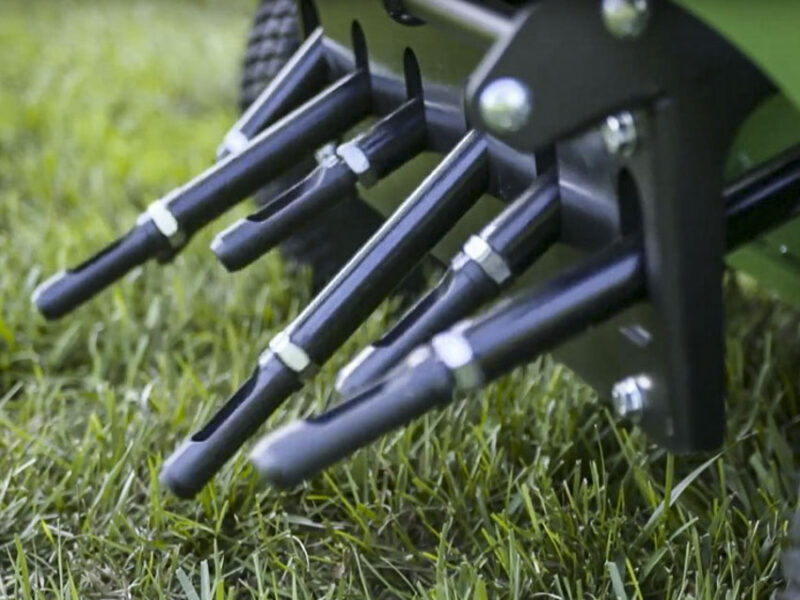
The best time for lawn aeration and dethatching for Southern lawns is during spring and summer, which are the peak growing conditions. Once fall arrives, you shouldn’t aerate or dethatch your lawn.
Some people aerate their lawn in late summer before overseeding it with a cool-season grass mix but don’t do it too late, or you’ll risk damaging your lawn.
Proper Application Techniques
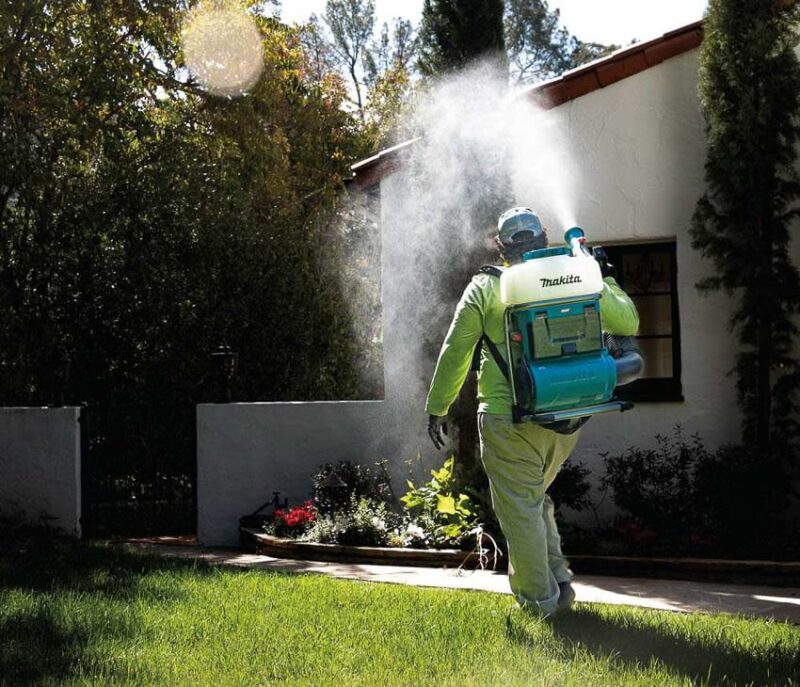
Depending on the type of fertilizer you choose, you’ll have various choices of application methods. You can spray liquid fertilizers using a backpack sprayer, hose-end sprayer, or pull-behind sprayer for your riding lawn mower.
For powders and granules, you can use broadcast spreaders or drop spreaders. Choosing the right fertilizer equipment is often a matter of how large your lawn is.
Watering and Maintenance
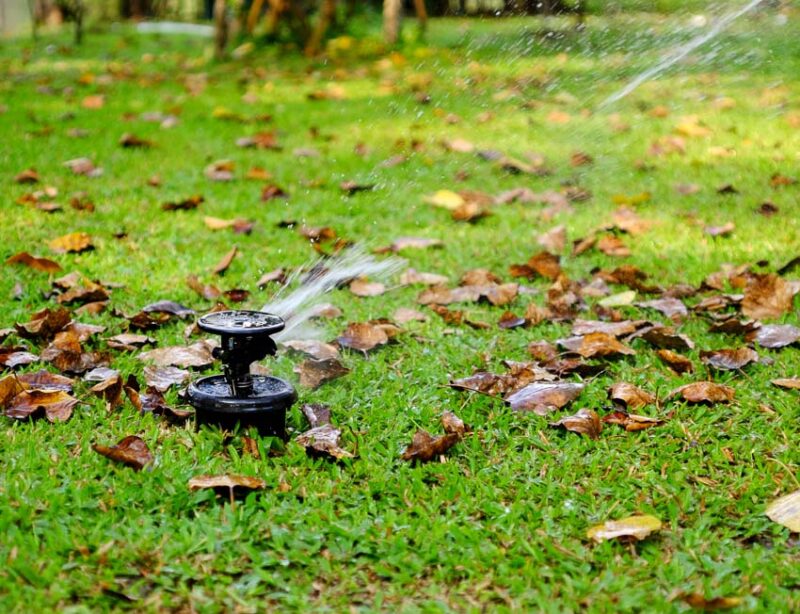
You need to water Southern lawns throughout the winter. Monitor the weather closely, and make sure your lawn is fully hydrated before temperatures drop below freezing. Water deeply, giving your lawn about one inch of water every 2 to 4 weeks.
Since it’s dormant and isn’t actively growing, you don’t need to mow your lawn in the winter unless you overseeded it with annual ryegrass.
FAQs about How to Fertilize Your Lawn in the Fall
What is the best fall fertilizer for Southern lawns?
One of the best fall grass fertilizers for Southern lawns is Sunshine Harvest High K . It has all the nutrients your grass needs in the fall, including a small amount of nitrogen. It comes in time-release pellets, so plenty of nutrients will remain available in the spring.
Can I fertilize my lawn in November in the South?
In the South, you’re growing warm-season grasses like Bermuda grass or zoysia grass. These grasses grow best when temperatures are between 75°and 90°F (24°to 32°C). Since they aren’t actively growing in November, they don’t need fertilizer, and it can actually make your lawn more vulnerable to cold snaps.
Is it too late to fertilize my lawn in October?
For Southern lawns, October is too late to fertilize. Once temperatures drop in the fall, grass plants transfer nutrients and energy to their root systems to prepare for winter dormancy. If you fertilize them, it can signal them it’s time to start growing. They’ll stop transferring energy to their roots, and any tender new growth will be susceptible to late cold snaps.
When should I apply the last fertilizer in the fall?
For Southern lawns with warm-season grasses, apply the last fall fertilizer in September, about 6 to 8 weeks before the first frost. This allows your lawn plenty of time to absorb the nutrients and transfer them to the root system.
Should I weed and feed in the fall?
Weed and feed products are good fall fertilizers, but remember you want a low-nitrogen product. You can also use organic pre-emergents to stop weeds from germinating and taking hold during the winter.

